The Alaska Class Cruiser is one of the more interesting warship designs of the Second World War. Few designs have as many admirers as they do detractors. Some appreciate the size and impressive capabilities of its 12″/50 naval guns. Others criticize the cost of the warships as well as debate whether they were even needed. In this article, we are going to address these thoughts by examining the origins of the Alaska class cruiser. In the process, we will learn why the United States Navy wanted them and what their unique design afforded them.
What led to the Alaska Class Cruiser?
The origins of the Alaska class can be traced as far back as the late 1920s. As soon as word got out that Germany was producing its Deutschland class armored cruisers, Navies around the World took notice. The unique design and powerful armament would lead to a warship that was individually more powerful than any treaty cruiser while being able to escape from any heavier dreadnought (excluding the British battlecruisers still in service). Most foreign Navies were quick to notice that such a warship would be adept at commerce raiding.
This led to a flurry of activity. Frane quickly responded with the lighter, but very fast Dunkerque class battleships. The United Kingdom already had battlecruisers in service, but investigated other new cruisers to counter them. The United States also went with the new cruiser design route (they were also spurred forward by rumors that Japan was working on similar large cruisers).
The solution to counter the threat of roving enemy cruisers was relatively simple, counter them with more powerful cruisers. That was the impetus behind the Alaska class.
However, the major issue was deciding just how much more powerful the cruiser needed to be. The United States agonized over this particular problem and produced several different designs of varying sizes and power.
The Powerful
CA2-D
The United States Navy knew they needed a cruiser that had the power to hunt down other cruisers. However, they were less sure of what potential adversary they should use to scale to their design. Countering typical heavy cruisers was relatively easy and could be accomplished with a modicum of resources or cost. However, these 8″ cruiser-killers were still vulnerable to larger cruiser raiders that were armed with guns of 11″ (280mm). To develop a cruiser capable of matching the largest of the foreign cruisers would require a warship of great size and power.
This method of thinking led to the larger preliminary designs of the Alask class cruiser. This cruiser, designated “CA2-D”, was the largest and most powerful design considered for the Alaska class.
The CA2-D cruiser was the earliest of the Alaska class preliminary designs, being designed in January of 1940. It was also the largest. At 850′ in length at the waterline and with a waterline beam of 99′ (Overall beam was 104′ 6″). This resulted in a standard displacement of 38,700 tons, greater than that allowed for treaty battleships (Though at the time of the CA2-D design the “Escalator Clause” was in effect, allowing for battleships of up to 45,000 tons).
This size allowed for an extremely powerful armament. Primary firepower would have been twelve 12″/50 guns in four triple turrets. The secondary battery was also enhanced, featuring sixteen 5″/38 dual-purpose guns in eight twin mounts. While less than contemporary battleships, the CA2-D cruiser featured a more effective layout of the guns, having two mounts on the centerline that fired over the primary turrets. This allowed them to bring ten 5″/38 guns into action against targets to the side, the same as larger battleships. In addition, the superfiring dual-purpose guns gave them better firing arcs to cover targets forward and aft of the cruiser. This meant that the CA2-D cruiser would have had a slightly better secondary firepower compared to US battleships.
This firepower was balanced out by equal levels of armor protection. The CA2-D cruiser would have been capable of resisting its own guns. This was due to the armor layout being based on contemporary battleship design rather than that of a cruiser. The CA2-D cruiser would have featured an inclined armor belt (inclined at 19 degrees compared to a near vertical “cruiser style” belt for the Alaska class) and three levels of deck armor.
In addition to protection against threats above water, the CA2-D cruiser would have had equal protection against threats under the water as well. A comprehensive underwater protection system was included, featuring four bulkheads and four void spaces sandwiched between them and the other skin of the bulge. This underwater protection system would have been about 12′ to 16′ deep, a similar depth to US battleships at the time.
The powerplant was to have been the same as that used on the Iowa class fast battleships. Developing 212,000 shaft horsepower, it was calculated that the CA2-D cruisers would attain a top speed of 33.6 knots. This speed would have allowed them to keep pace even with the Iowa class battleships and outrun most cruisers in service at the time.
Another feature carried over from battleships was the use of dual rudders in the CA2-D cruisers. Unlike the smaller cruisers with single rudders, the CA2-D cruisers would have two. Potentially this would have given them better maneuverability as well as a slight increase in survivability through enhanced redundancy.
Overall, the CA2-D cruiser was the result of the United States Navy attempting to not just counter enemy heavy cruisers, but even the more powerful large cruisers coming into service. The CA2-D cruisers would have had the firepower, speed, and armor to effectively overwhelm any cruisers they come across. In addition, they likely would have the capability to fight many battleships on relatively equal footing, especially older designs and the smaller inter-war battleships that were in service. It’s possible that foreign battleships such as Scharnhorst and Dunkerque classes had some input on the size and firepower of the CA2-D design.
In service, had they not been engaged in sweeping the sea lanes free of enemy cruisers, the CA2-D cruisers likely would have been involved in protecting the Second line of the United States Fleet. Serving alongside the Iowa class, they would have been useful in countering Japan’s cruisers attempting to bypass the battle line.
Ultimately, the United States Navy recognized that the CA2-D cruiser was overkill for its primary mission, the hunting of enemy cruisers. It’s size would have ensured that the CA2-D would have competed with capital ships for construction space and materials, possibly hurting production capacity.
This led designers to consider a smaller, more economical design for their cruiser-hunter, though one that was still more than capable of overwhelming enemy cruisers.
CA2-A
In addition to the monstrous CA2-D class cruiser, designers also prepared a design for a smaller, slightly more restrained cruiser. This cruiser, designated the CA2-A design, was the smallest of the oversized large cruisers that led to the Alaska class cruiser.
Despite being a more restrained design, this cruiser was still very large. With a waterline length of 800′ and a waterline beam of 85.1′, it was expected that the CA2-A cruiser would displace 25,600 tons at standard displacement.
This size would permit a main battery of nine 12″/50 guns in three triple turrets. Secondary firepower would be provided by twelve 5″/38 dual-purpose guns in six twin turrets.
Though featuring less protection, the CA2-A cruiser would still incorporate an armor style modeled after that of a battleship. The belt was inclined like that of a battleship, featuring an incline of 15 degrees. It also retained the triple layer armor deck that was also standard on United States battleships at the time. Together, this armor system was intended to give protection against 12″ gunfire though with a smaller immunity zone.
A torpedo protection system was also to be fitted. Like battleships, it was to be a multi-layer armor system featuring four bulkheads behind the outer bulge and four void spaces sandwiched between them.
A powerplant capable of generating 150,000shp was to be included. Thanks to a longer, finer hull form, this was still sufficient to allow for a top speed of 33.5 knots. Like cruisers of the period, a single large rudder would be used.
Ultimately, the CA2-A cruiser would be the closest to the Alaska class cruiser design. However, the United States Navy was still not fully satisfied with the CA2-A. They still recognized that the cruiser’s size would drain resources and hold up production. In addition, it would be a very costly warship for such a specialized role.
This train of thought led to the development of some smaller, more economical designs. These smaller preliminary designs for the Alaska class cruiser can be seen below.
The Economical
Heavy Cruiser Scheme 2
This cruiser, designated Heavy Cruiser Scheme 2, was the smallest of the preliminary designs of the Alaska class cruiser. It was first created in March of 1940 and was one of the earliest of the preliminary designs.
This cruiser design was only slightly larger than the Baltimore class heavy cruisers undergoing development at the same time. While a Baltimore class cruiser was 664′ (202.3) at the waterline and with a beam of 70′ (21.3m), this cruiser would have been 700′ (213.3m) at the waterline and with a beam of 72′ (22m). This led to a slightly greater displacement. The Baltimore class cruisers had a standard displacement of 13,600 tons. The Heavy Cruiser Scheme 2 design would have been a bit larger at 15,750 tons standard displacement.
This increase in size was sufficient to fit one extra triple 8″ (203mm) turret on the cruiser, giving it a total of twelve 8″ guns with six guns forward and six aft.
All other armament would have remained similar to the Baltimore class heavy cruisers with twelve 5″ (127mm) dual-purpose guns in six twin mounts and comparable anti-aircraft weaponry.
The similarities would continue from there. Armor protection was more or less the same and even the powerplant of the Baltimore class was to be carried over to the new cruiser, giving it a total of 120,000shp. Despite the lack of increase in power, speed was to remain relatively similar thanks to a shallower draft as well as weight reduction incorporated elsewhere (no provisions were main for aviation facilities for instance).
Overall, the Heavy Cruiser Scheme 2 design appears to be the one that was created to be the cheapest option with the least amount of development needed. It would have a minimal impact on production, being able to use the same facilities and material already available to heavy cruiser production.
On the other hand, this minimal increase in cost was proportionate to the minimal increase in fighting capability. While the cruiser had the ability to expend a large volume of firepower through a broadside of twelve 8″ and eight 5″ guns, it was feared this was still insufficient to engage enemy cruisers. Against foreign cruisers with 8″ guns, it would still find itself within range of their guns. Against larger ships with 9.2″ (234mm) to 12″ (305mm) guns, the American cruiser would find itself possibly unable to respond in a gunnery duel.
Heavy Cruiser Scheme 3
Based on the Heavy Cruiser Scheme 2 we had looked at previously, the Scheme 3 design was slightly enlarged to carry the larger naval guns. While the Scheme 2 cruiser was 700′ (213m) in length at the waterline and 72′ (22m) at the beam, the Scheme 3 cruiser was slightly larger at 710′ (216.m) at the waterline and 74′ (22.5m) at the beam.
This increased size allowed the Scheme 3 Heavy Cruiser to swap out the battery of twelve 8″ (203mm) guns with six 12″ (305mm) guns in three twin turrets. These guns would give it the firepower to overwhelm enemy 8″ guns while giving it the ability to engage other large cruisers on equal terms.
Even with the larger guns, the cruiser was still relatively economical. It’s powerplant, secondary weaponry, and hull design were directly carried over from the Heavy Cruiser Scheme 2 design, itself carried over from the Baltimore class heavy cruiser. This would have ensured that costs would have been kept to a minimum.
The Strange
Heavy Cruiser 4-A
As the United States Navy continued developing the preliminary designs for Alaska class cruiser, they quickly ran into issues of cost vs. capability. They wanted the ability to overwhelm enemy cruisers in combat, but were also worried about introducing bottlenecks to war production by ordering larger, specialized warships.
One of the novel attempts to make a cheaper cruiser involved a modification of the economical designs we have looked at previously.
This cruiser, designated Heavy Cruiser 4-A, was developed in April 1940. It sought to strike a balance between firepower and cost by introducing a “convertible” design.
The cruiser was designed to permit two different main batteries. Some cruisers could be ordered with twelve 8″ guns while others could carry six 12″ guns. The main guns would then be supported by twelve 5″ dual-purpose guns in six twin mounts along with lighter weapons.
Armor protection would remain enough to protect against enemy 8″ gunfire. In addition, the powerplant of the Baltimore class was still calculated to allow for a top speed of 33 knots.
This could be achieved on a hull that was 710′ at the waterline and 74′ 6″ at the beam. This would result in a standard displacement of 17,500 tons.
It was probably hoped that by introducing a new heavy cruiser design of sufficient size, they would have a unified production system. The 8″ cruiser variant would handle all of the roles of a typical heavy cruiser while the up-gunned 12″ variant would be responsible for actively hunting down enemy cruisers/raiders. In theory this would ultimately reduce cost and improve production.
The problem was that the up-gunned variant would still not ensure sufficient capability to overwhelm enemy cruisers. On the other hand, heavy cruisers with 8″ guns of 17,500 tons were seen as overkill for their role, especially considering that other navies were still operating 10,000 ton “treaty cruisers”. Despite the idea of simplified production, it ultimately would have been more expensive to field large numbers of heavy cruisers of this size.
Cruiser CA2-F
As development continued, the United States Navy finally decided that they would shoot for the middle ground. They determined that the new cruiser would have to be around 25,000 tons. Large enough to fulfill its role, but not too large of a drain on resources or production.
This tonnage requirement introduced its own problems though. While a balance of firepower, armor, and speed could be achieved on larger displacements, designers now found themselves having to carefully weigh each feature for the new design.
Of course, they did try some novel solutions to still attempt to achieve a balanced design. Take for instance this preliminary Alaska class cruiser concept, designated the CA2-F, created in June of 1940.
The CA2-F design attempted to retain armor and speed by cutting back on the firepower. Interestingly, the cruiser has seven 12″ guns in three turrets. Two twin turrets are mounted forward while a triple turret sits aft.
Outside of the odd main battery, the other armament is consistent with previous cruiser designs. Twelve 5″ dual-purpose guns in six twin mounts and the associated light anti-aircraft weaponry.
By adopting a mix of triple and twin turrets, designers were able to incorporate slightly better armor. The immunity zone against 12″ naval guns, the same as the cruiser carried, was improved. Deck protection was also enhanced, allowing for better protection against bombs and plunging fire.
Speed would remain 33 knots with a 150,000shp powerplant. A single, center rudder would also be utilized.
All of this would be carried by a hull that was 750′ at the waterline and 84′ at the beam. Despite the heavy 12″ guns, decent armor, and high speed, the standard displacement was still calculated to be 24,700 tons.
Overall, while the CA2-F cruiser design was an interesting attempt to balance out a design on a set tonnage limit, the United States Navy did not like the mixed battery. They determined, correctly, that the arrangement of the main guns would make gunnery difficult. The cruiser could only manage two salvos at a time, one from the aft turret and one from the two forward turrets. The differing number of shells per salvo between the forward and aft guns would also confuse observers.
The Alaska Class Cruiser Proper
After weighing the many options, the United Stats Navy finally set a tonnage limit of roughly 25,000 tons. This was considered the best size to allow enough firepower to overwhelm other cruisers, while also being small and cheap enough to not drastically affect naval shipbuilding.
Designers quickly got to work on building a cruiser of this size. It soon became apparent that a balanced design was not possible on this tonnage limit. While nine 12″ guns could be carried along with the machinery to propel the ship to 33+ knots, not much tonnage was left for protection. Designers had to settle for less armor over the waterline as well as completely dispensing with a comprehensive underwater protection system. Even with these restrictions, displacement grew slightly.
The design for the Alaska class cruiser would emerge as a supersized Baltimore class cruiser. With a standard displacement of 27,800 long tons and a full load displacement of 34,000 long tons, the Alaska class was about twice the size of a Baltimore class cruiser. At 791′ (241m) in length at the waterline and with a beam of 91′ 9″ (28m), it was also considerably longer and wider.
This size enabled a main battery of nine 12″/50 Mark 8 naval guns along with a secondary battery of twelve 5″/38 dual-purpose naval guns.
Armor was light in relation to the weaponry with a main armor belt of 9″ (230mm) inclined at 10 degrees. Deck protection varied between 4″ (102mm) and 3.8″ (97mm). This armor only offered minimal protection against the cruiser’s own 12″ guns, but would have been highly efficient against 8″ (203mm) and 5.9″ (150mm) guns found on the cruisers it likely would have met.
Due to the increased size of the Alaska class, the original powerplant of 120,000shp would no longer be sufficient to produce the desired speeds. Luckily, designers found that the hull was large enough to allow the same 150,000shp powerplant that was being used for the Essex class carriers. This was sufficient to exceed 33 knots. One disadvantage, due to the heavy cruiser design influence, was the use of a single rudder rather than two as other large United States Navy ships used.
The Alaska class in Perspective
In the years since the Second World War, many historians have debated the role of the Alaska class and what merits they might have had. Many throw criticisms at the ships for their large size, expensive costs, and lack of any role.
However, it must be remembered what the Alaska class were originally intended to do. They were intended to hunt down and counter enemy cruisers. Some might criticize the size of the Alaska class, but it was this same size and power that enabled them to fight enemy cruisers with a high chance of success.
It is commonly pointed out that this cruiser threat never materialized, meaning the Alaska class were built for a role that didn’t exist. However, people today have the advantage of hindsight, a luxury that the United States Navy didn’t have prior to the Second World War. The Navy saw a potential threat and designers promptly developed a response. They built a warship with the information they had at the time.
Even as it became apparent during the War that the cruiser threat was not as bad as previously thought, other roles came about. The Navy found that the Alaska class were good in the carrier escort role. They also supplemented the more expensive Iowa class battleships in service, providing a cheaper alternative that freed up the battleships for other roles when needed.
Lastly, the subject of cost. While the Alaska class were expensive warships, it should be pointed out that they were not as expensive as they could have been. The Navy quickly realized that the preliminary designs were too large for what they needed and scaled back the design accordingly. They also made every attempt to reduce cost, such as the adoption of a powerplant used by the Essex class. Other aspects of the design were undeniably expensive, such as the development and production of a brand new 12″ naval gun. Overall however, the Navy was aware of the costs associated with this specialized warship and accepted the cost.
Further Links of Interest:
Liked This piece on the origins of the Alaska class cruiser? Check out some Other Links
Want to follow Navy General Board on Social Media? Check us out on the platforms below!
- YouTube
- Want to help the site continue to expand? Support us on Patreon.
- Learn more about how NGB got started!
Some more great articles:
High resolution photos of HMS Hood in Wellington, 1924
F-14 vs F-15 : Tomcat vs Eagle
A look at British B.VIII naval gun machinery and variants
High quality pictures of British battlecruisers

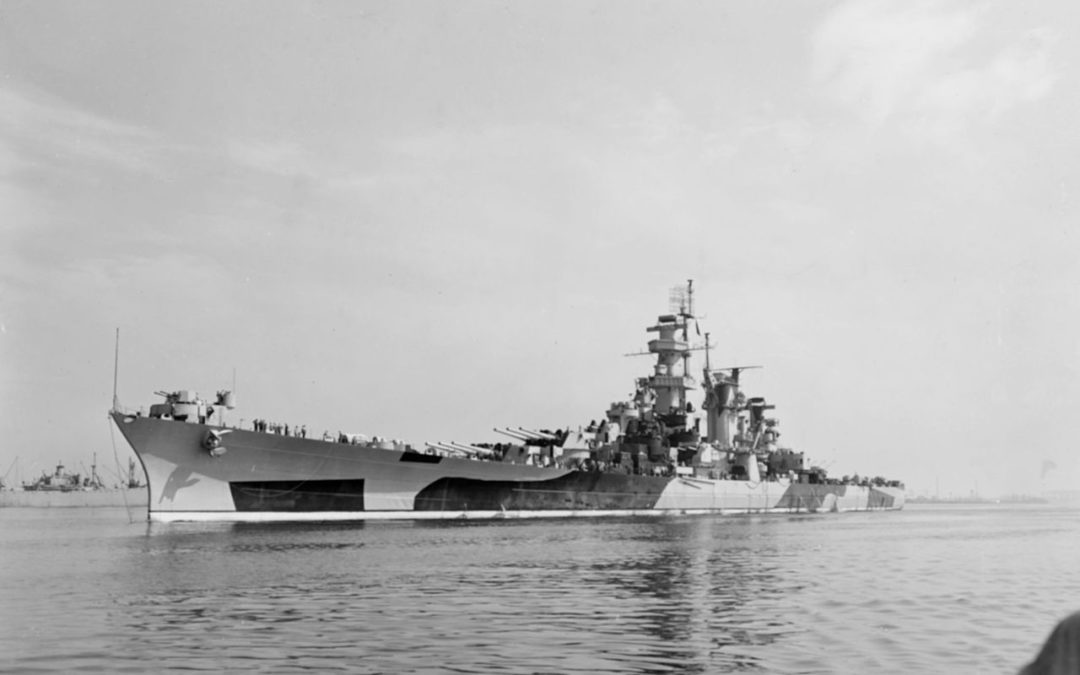
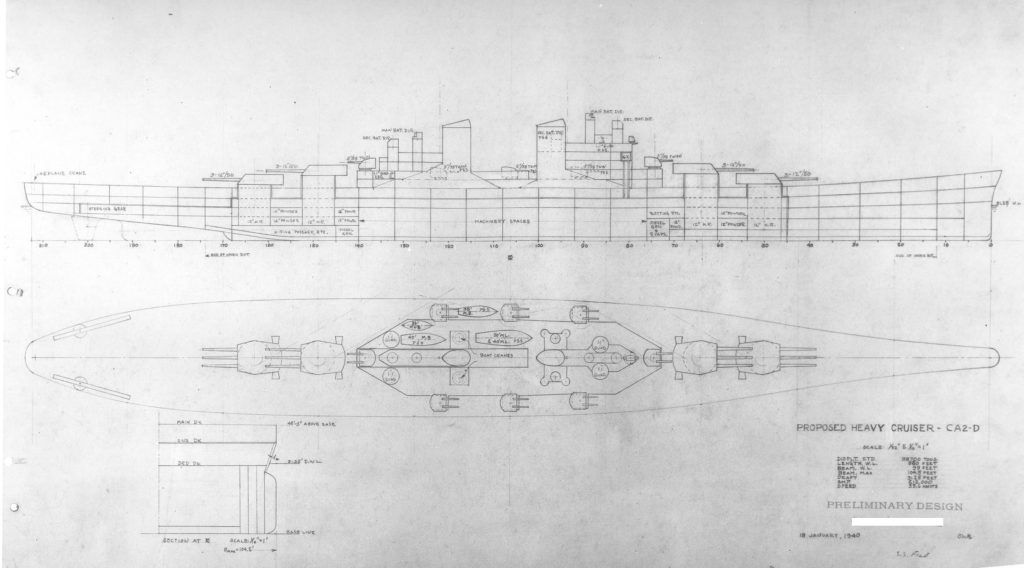
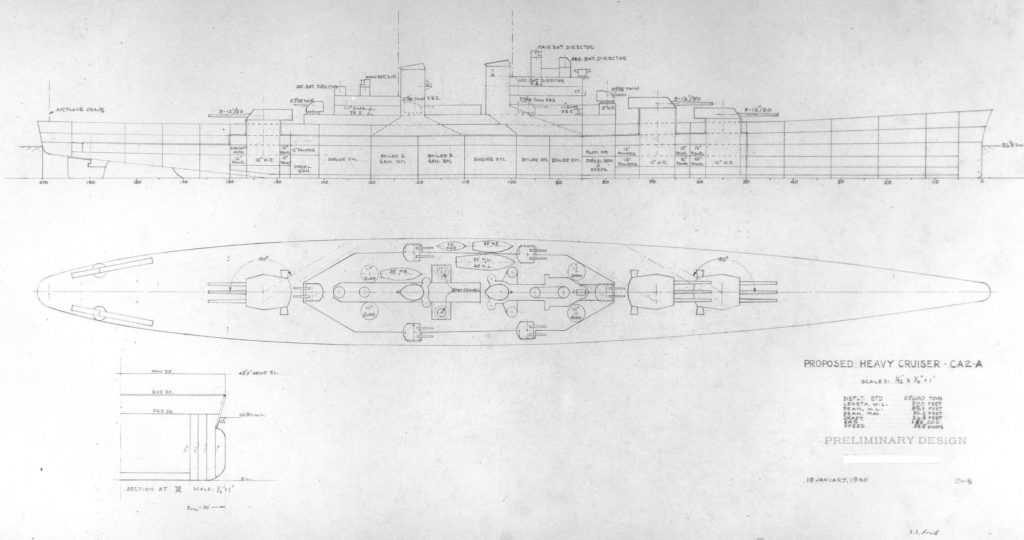
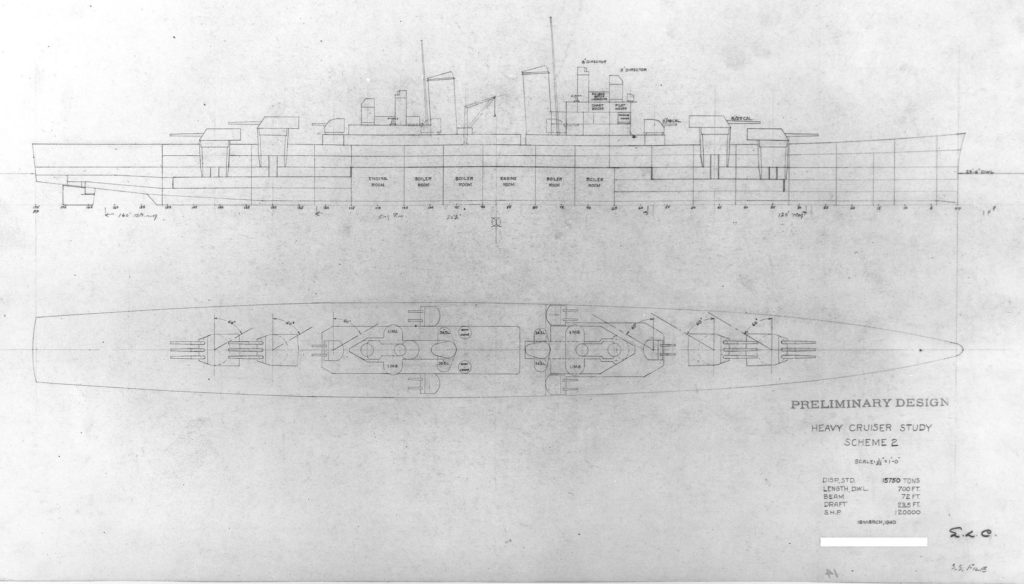
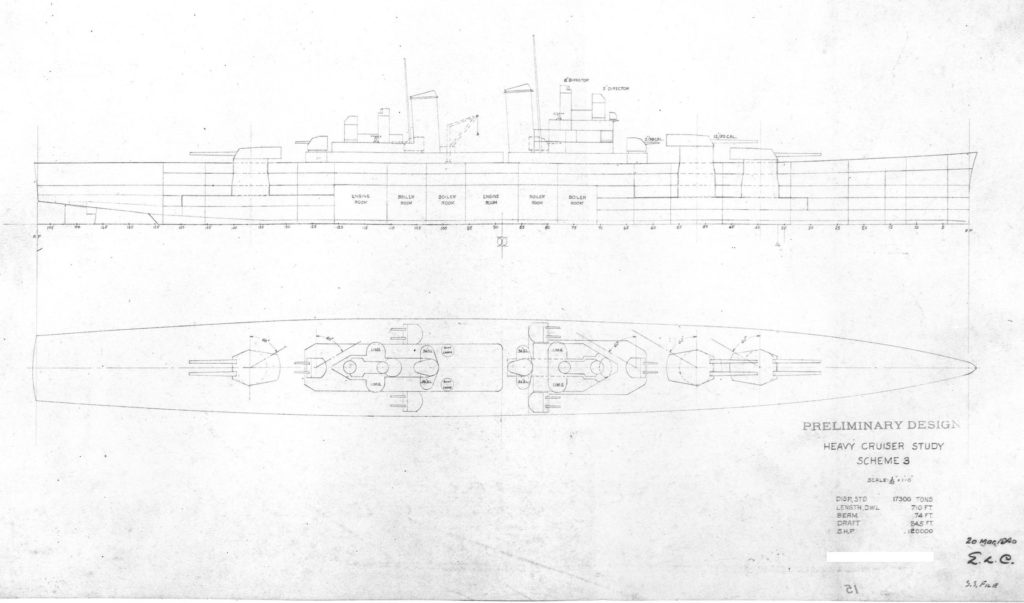
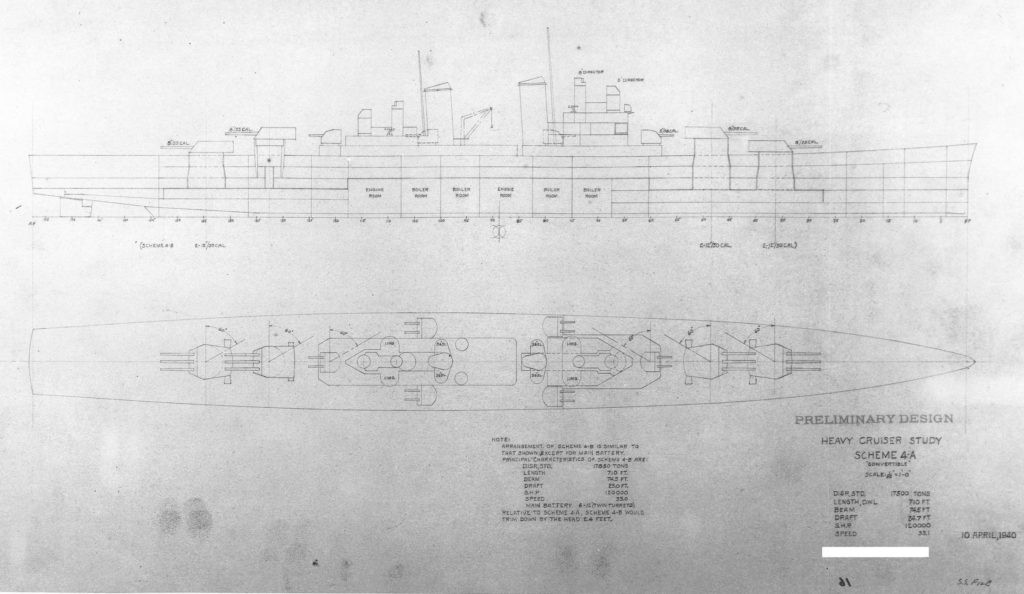
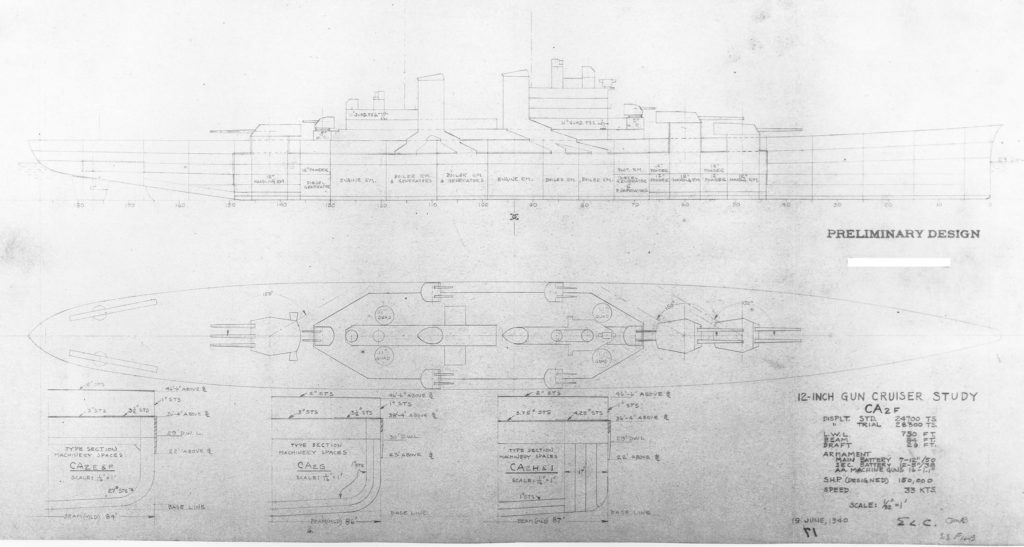
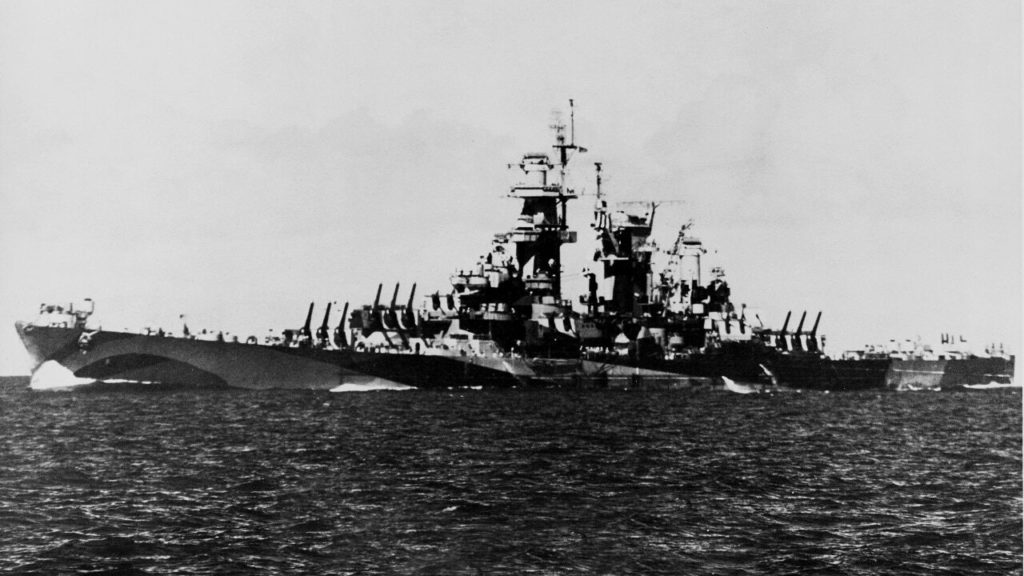
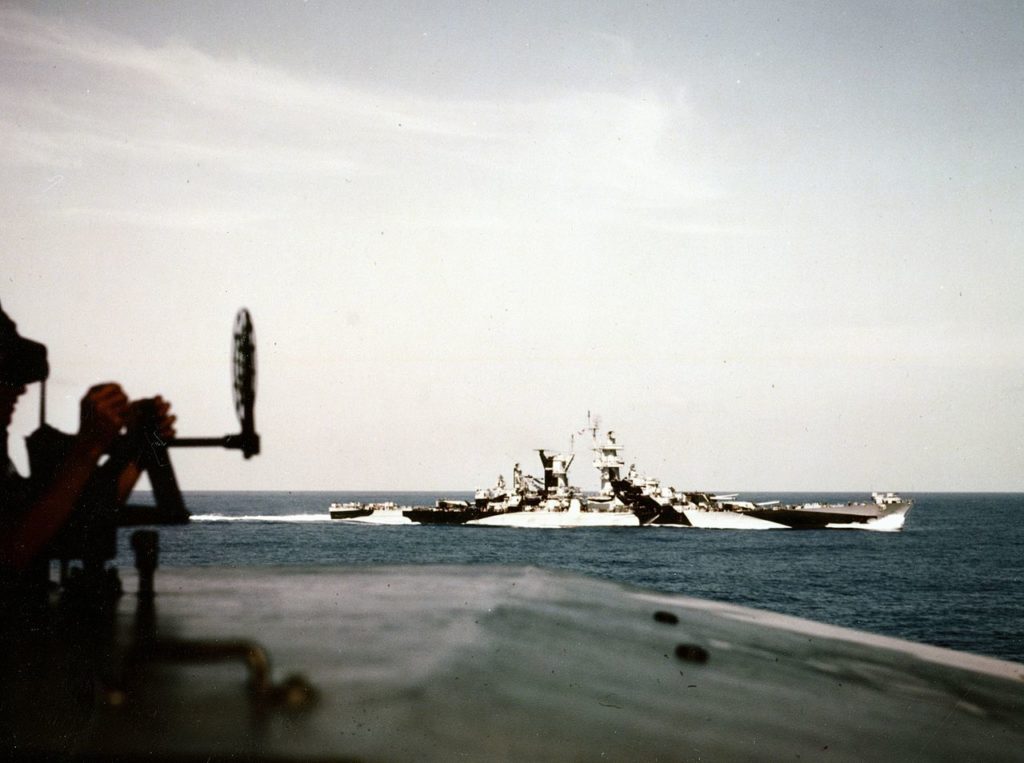

I have long believed that the best choice for a cruiser-killer was an option not considered, the use of twin 14″/45 from the New York, Nevada, Pennsylvania, and succeeding classes of slow and outdated battleships, based on a Cleveland/Baltimore class hull. A twin turret fore and aft would have overwhelmed any conventional cruiser (the triples all had shared powder and shell hoists for two of the guns, so they were essentially twins), and although the armor would not be of battleship standard, it would not have been a one way fight against a fast battleship catching a carrier group by surprise and would allow the carriers to evade, and with mixed cruiser and battleship actions the cruisers would not have been targeted first. As it happened, the rear turrets from USS Arizona were removed and emplaced in a shore battery in Hawaii during the war, they would have been far more valuable arming a new ‘USS Phoenix’-class cruiser. Apart from some additional magazine protection, armor would have been scaled to cruiser standards. No new guns would need to be produced, and all the steel of the scavenged battleships would have been available for construction of the battle gun cruisers. Some of the secondary battery could have been mounted on the centerline. The hull would have a common design to an armored gun cruiser using a 7.1″ gun with lightweight AA and heavyweight armor piercing projectiles in a DP turret, as well as 5″, 3″, and 40/30/20mm weapons, with likely twice as many CA’s being built as CB’s.